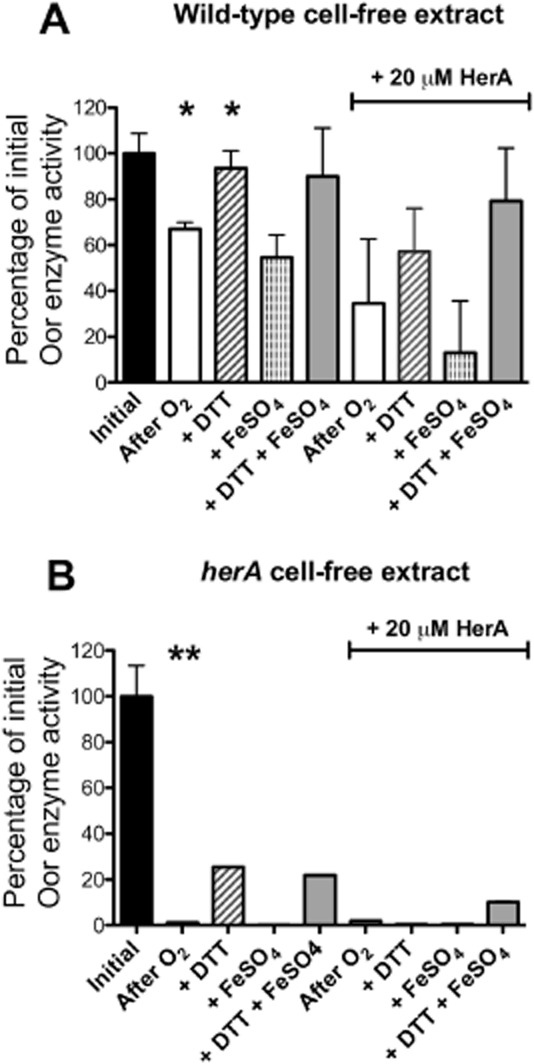Figure 2.

Oxygen damage and in vitro recovery of Oor in CFEs prepared from microaerobically grown C. jejuni NCTC 11168 wild-type (A) and herA mutant (B). CFEs were prepared under anaerobic conditions without the addition of the O2 scavenging system and assayed for initial activity of Oor (black bars). The CFE was then exposed to atmospheric oxygen with gentle agitation for 60 min before transfer to anaerobic vessels with or without purified HerA protein (20 μM final concentration). The vessels contained the O2 scavenging system to halt aerobic stress and the extracts were assayed again either without any further treatment (after O2, open bars) or after the addition of DTT (5 mM; diagonal striped bars) or FeSO4 (1 mM; vertical striped bars) or a mixture of both (grey bars). Samples were incubated at 37°C before being assayed for enzyme activity. All values are given as a percentage of the initial pre-stress rates (mean wild-type rate, 1.4 μmol min−1 mg protein−1; mean herA mutant rate, 1.0 μmol min−1 mg protein−1). Error bars indicate standard deviation of 3 replicate assays. In (A), a significant difference (*; P < 0.05) between the initial rate and that after O2 exposure was apparent, and between the latter rate and after DTT treatment. There were no significant differences (P > 0.05) between the rates in the presence of HerA compared with its absence. In (B) a larger significant decrease (**P < 0.01) in Oor rate occurred after exposure of the herA CFE to oxygen, with much poorer recovery by DTT. Rates of treated herA CFEs are single measurements.
